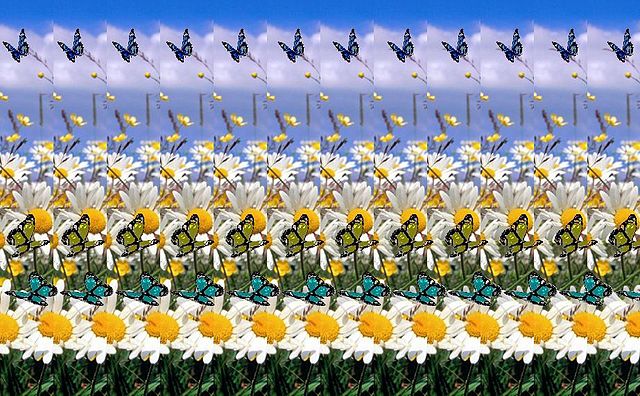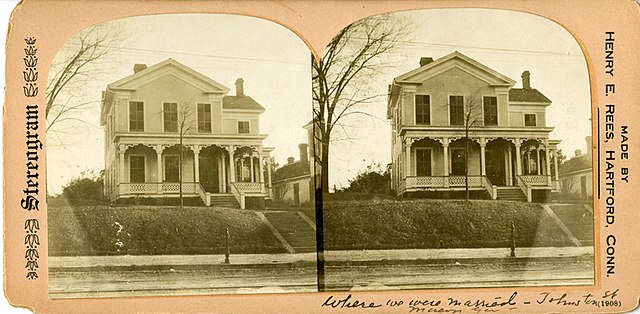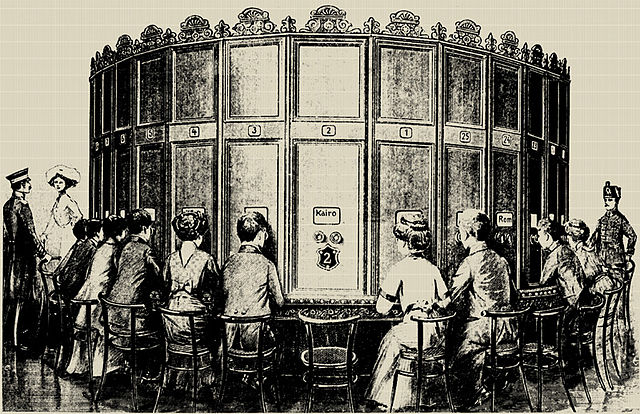An autostereogram is a two-dimensional (2D) image that can create the optical illusion of a three-dimensional (3D) scene. Autostereograms use only one image to accomplish the effect while normal stereograms require two. The 3D scene in an autostereogram is often unrecognizable until it is viewed properly, unlike typical stereograms. Viewing any kind of stereogram properly may cause the viewer to experience vergence-accommodation conflict.
Image: Mariposas autoestereoscópicas
Image: Chess Single Image Stereogram by 3Dimka
Stereoscopy is a technique for creating or enhancing the illusion of depth in an image by means of stereopsis for binocular vision. The word stereoscopy derives from Greek στερεός (stereos) 'firm, solid', and σκοπέω (skopeō) 'to look, to see'. Any stereoscopic image is called a stereogram. Originally, stereogram referred to a pair of stereo images which could be viewed using a stereoscope.
Pocket stereoscope with original test image. Used by military to examine stereoscopic pairs of aerial photographs.
Stereoscopic image of 787 Orange Street, Addison R. Tinsley house, c. 1890s
Stereoscopic image of 772 College Street (formerly Johnson Street) in Macon, Ga, c. 1870s
Kaiserpanorama consists of a multi-station viewing apparatus and sets of stereo slides. Patented by A. Fuhrmann around 1890.






